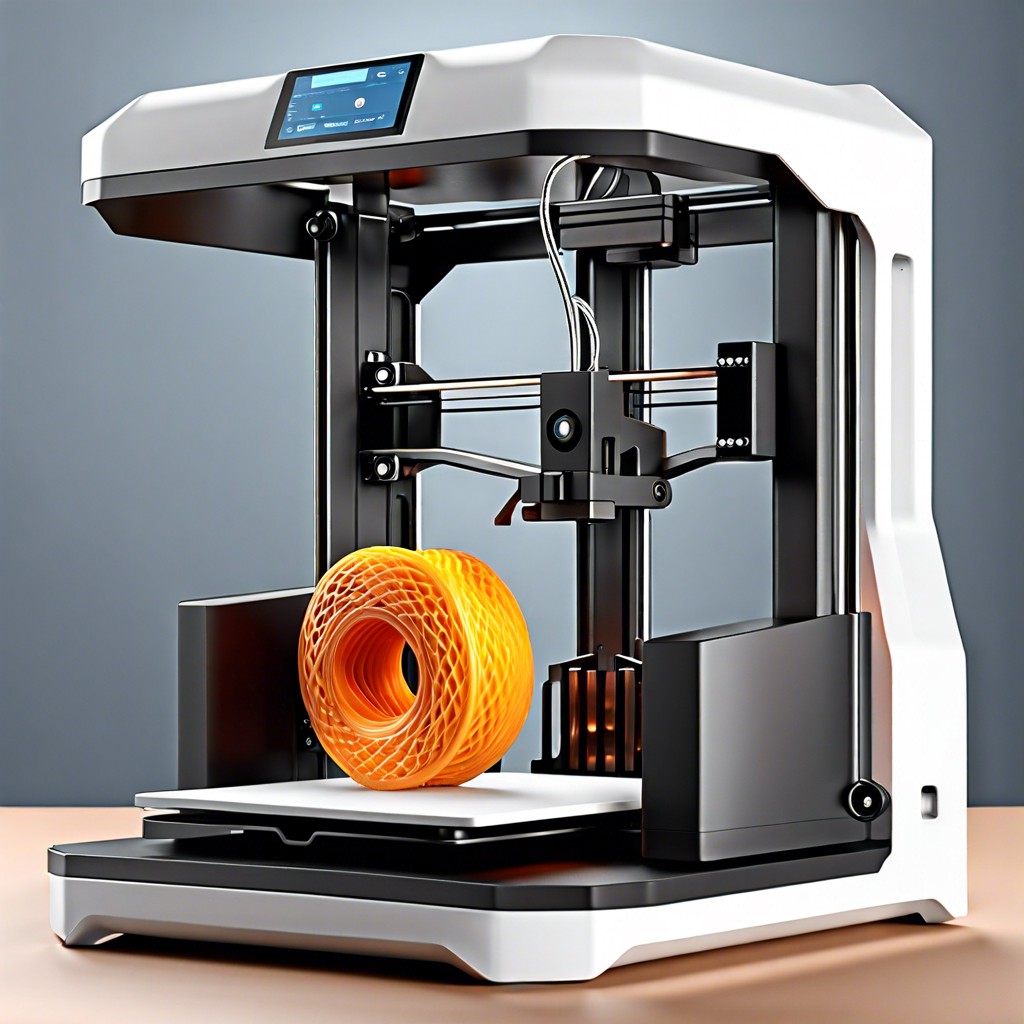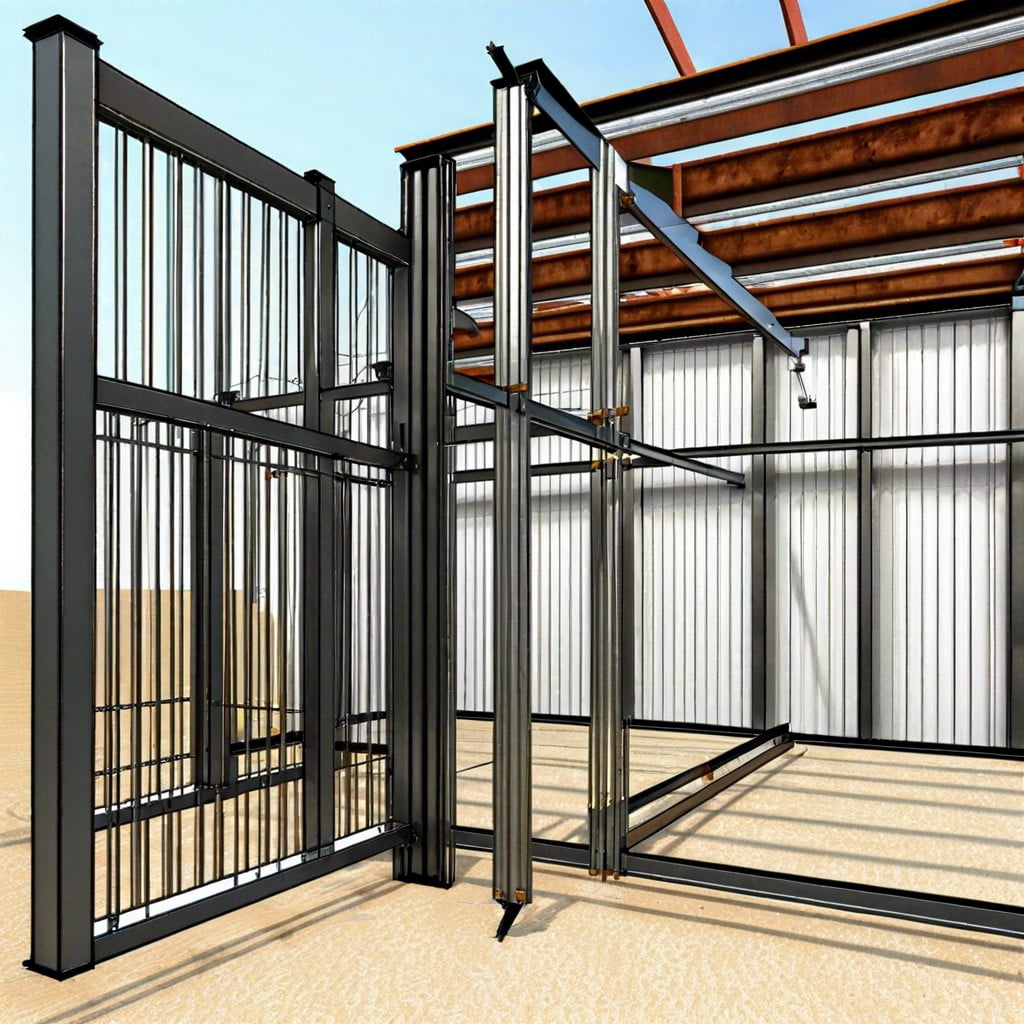Polymers are commonly used in the building industry for waterproofing, insulation, roofing membranes, sealants and adhesives, window frames and doors, flooring, and wall coverings.
Polymers are a versatile and widely used material in the building industry. They can create a range of products, from insulation to waterproofing materials.
We’ll look at some of the most common applications of polymers in the building industry and how they can benefit your next construction project.
Key takeaways:
- Polymers are used in architecture for lightweight and durable structures.
- PVC is commonly used for insulation, windows, and doors.
- Polymer insulation resists moisture, mold, and reduces energy costs.
- Adhesives bond various materials, reducing noise and enhancing durability.
- Polymer coatings protect surfaces from damage and provide an attractive finish.
Architecture

Polymers are a material that has become increasingly popular in the building industry, particularly in architecture. Polymer materials are lightweight and durable, making them ideal for construction projects.
They can create strong and flexible structures such as bridges, buildings, and other large-scale structures. Polymers can be used to create decorative elements such as cladding or siding on buildings.
This material is also often used for insulation due to its ability to resist heat transfer. Polymer materials are often used in interior design applications such as furniture and flooring due to their attractive appearance and durability.
PVC
Plastics are a type of polymer widely used in the building industry. Plastics are lightweight, durable, and relatively inexpensive materials that can be used for various applications.
They can be molded into different shapes and sizes to suit specific needs, making them ideal for many construction projects. Plastics are often used as insulation in walls and roofs to help keep buildings warm or cool, depending on the season.
They can also be waterproofing membranes to protect structures from water damage. Plastics are commonly employed in window frames and doors due to their strength and durability.
In addition to these uses, plastics may also be found in materials such as vinyl tiles or laminate flooring, which provide a low-maintenance surface with good resistance against wear and tear.
Plastics have become increasingly popular for use in furniture due to their versatility; they can easily be molded into any shape desired while still providing excellent support for occupants of the space.
This makes them ideal for chairs, tables, desks, shelves, cabinets, etc., allowing designers more freedom when creating interior spaces within buildings.
Insulation
Polymer insulation is a material used to insulate buildings from the elements. It is made up of polymers, which are long chains of molecules that can be manipulated to create different properties.
Polymer insulation has many advantages over traditional materials such as fiberglass or cellulose, including its ability to resist moisture and mold growth, provide superior soundproofing, and reduce energy costs. It also has a longer lifespan than other types of insulation and can be recycled at the end of its life cycle.
Polymer insulation is often used in walls, ceilings, attics, basements, crawl spaces, and other areas where thermal protection is needed.
Adhesives
Adhesives are a type of polymer used in the building industry to join two or more materials. Adhesives can bond wood, metal, plastic, and other materials.
They are often used in construction projects such as flooring installation and window frames. Adhesives provide a strong bond resistant to water, heat, and vibration.
They also help reduce noise levels by dampening sound waves between two surfaces. Adhesive products come in many forms, including liquid glues, tapes, sealants, and caulks.
Each type of adhesive has unique properties that make it suitable for different applications within the building industry.
Coatings
Polymer coatings are a type of coating used in the building industry to protect surfaces from damage and wear. These coatings are typically applied as a thin layer over existing materials, such as concrete or metal, to provide an extra layer of protection.
Polymer coatings can be used on interior and exterior surfaces, including walls, floors, roofs, windowsills, and more. They are often used in areas that require additional protection from water or other elements.
Polymer coatings come in many different forms depending on their intended use. For example, some polymer coatings may be designed for waterproofing, while others may be designed for fire resistance or UV protection.
Some polymer coatings may contain additives that help reduce dirt buildup or improve the overall appearance of the surface they’re applied to. Polymer coatings can also be tinted with various colors to match any desired aesthetic look.
Overall, polymer coatings offer a great way to protect surfaces from damage while providing an attractive finish that will last for years.
Polymers in Energy Efficient Windows
Energy efficiency is a key consideration in modern construction, and polymers play a crucial role in achieving this goal. One common application of polymers in the building industry is their use in energy-efficient windows.
These windows are designed to minimize heat transfer between the interior and exterior of a building, resulting in reduced energy consumption for heating or cooling.
Polymers such as polyvinyl chloride (PVC) or thermoplastic olefin (TPO) are often used as framing materials for these windows due to their excellent insulating properties. These materials have low thermal conductivity, meaning they do not readily conduct heat from one side of the window frame to the other.
In addition to providing insulation, polymer-based window frames also offer durability and resistance against weathering effects like moisture damage or UV radiation exposure. This ensures that energy-efficient windows maintain their performance over time without compromising on functionality.
Moreover, advanced polymer coatings can be applied on glass surfaces to further enhance energy efficiency by reducing solar heat gain while allowing visible light transmission into buildings. These coatings selectively reflect infrared radiation while allowing most visible light wavelengths through.
By incorporating polymers into window design and construction processes, builders can create structures that effectively regulate indoor temperatures throughout different seasons while minimizing reliance on artificial heating or cooling systems.
The Role of Polymer Foams in Building Insulation
These lightweight materials are made up of tiny air-filled cells that trap heat and prevent its transfer through conduction. The closed-cell structure of polymer foams makes them excellent insulators, as it inhibits the movement of air and reduces heat flow.
One popular type of polymer foam used for insulation is expanded polystyrene (EPS). EPS foam boards are commonly installed in walls, roofs, and floors to enhance the building’s thermal performance.
They effectively reduce heat loss during winter months while keeping interiors cool during summer by minimizing the transfer of external temperatures.
Another widely used option is polyurethane foam (PUR), which offers exceptional insulation properties due to its low thermal conductivity. PUR can be sprayed or injected into cavities or gaps within walls or roofs to create a seamless layer that prevents drafts and minimizes energy loss.
The use of polymer foams in building insulation not only improves energy efficiency but also contributes to soundproofing capabilities by reducing noise transmission between rooms or from outside sources. These materials are resistant to moisture absorption, preventing mold growth while maintaining their insulating properties over time.
Polymers in Structural Composites
Polymers play a crucial role in the development of structural composites used in the building industry. These composites often consist of reinforcing fibers, such as carbon or glass, embedded within a polymer matrix.
The use of polymers in structural composites offers several advantages. Firstly, polymers have excellent mechanical properties like high strength-to-weight ratio and flexibility, making them ideal for load-bearing applications.
They exhibit resistance to corrosion and chemicals which enhances their durability over time.
Polymers also provide design flexibility as they can be molded into various shapes during manufacturing processes like injection molding or pultrusion. This allows for complex geometries and customized designs that meet specific construction requirements.
Furthermore, using polymers in structural composites helps reduce overall weight without compromising on strength compared to traditional materials like steel or concrete. This lightweight characteristic is particularly beneficial when constructing large-scale structures where weight reduction translates into cost savings during transportation and installation.
How Polymers Are Aiding in Fire Safety Solutions
With their unique properties, polymers are being used to develop materials that can withstand high temperatures and prevent the spread of fires.
One common application of polymers is in flame-retardant coatings. These coatings contain special additives that slow down or inhibit the combustion process when exposed to heat or flames.
By applying these coatings to various surfaces such as walls, ceilings, and furniture, the risk of fire spreading can be significantly reduced.
Polymers are also used in manufacturing fire-resistant cables and wires. Traditional electrical cables made from materials like PVC (polyvinyl chloride) can release toxic gases when burned.
However, polymer-based cables have improved resistance against flames and emit fewer harmful fumes during a fire incident.
Moreover, polymer composites reinforced with flame-resistant fibers like glass or carbon offer enhanced structural integrity while providing excellent resistance against heat transfer during a blaze. These composites find applications in construction elements such as doors, partitions, and cladding systems where they act as barriers against spreading fires.
Polymeric Materials Used in Construction Sealants
These versatile substances are used to fill gaps and joints, preventing air and water infiltration while ensuring structural integrity. Construction sealants made from polymers offer several advantages over traditional alternatives.
One key benefit is their excellent adhesion properties. Polymers have the ability to bond well with various substrates commonly found in construction, such as concrete, metal, glass, and wood.
This ensures a strong and durable seal that can withstand environmental stresses like temperature fluctuations or building movement.
Another advantage of polymeric sealants is their flexibility. Unlike rigid materials like cement or mortar that may crack under stress or movement, polymer-based options remain pliable yet resilient over time.
This flexibility allows them to accommodate joint expansion and contraction without compromising the effectiveness of the sealing function.
Polymeric construction sealants exhibit superior resistance against weathering elements such as UV radiation from sunlight exposure or moisture damage caused by rainwater penetration. They maintain their performance for extended periods without deteriorating due to these external factors.
Furthermore, many polymer-based sealant formulations are designed with specific properties tailored for different applications within the building industry—whether it’s interior caulking around windows or exterior sealing on roofs exposed to harsh weather conditions.
Polymer-based materials used in construction seals provide exceptional adhesion capabilities along with flexibility,resistance against environmental factors,and durability.These qualities make them an ideal choice for achieving effective long-lasting seals throughout various areas of a building.
FAQ
What are the applications of polymers in construction industry?
Polymers are utilized in the construction industry for a multitude of applications, including as vapor retarders, flooring materials, window films, countertop protection, roofing, room dividers, component covers, foam underlays, damp-proof membranes, protective coatings, and to prevent lead poisoning.
What are 5 applications of polymers?
Five applications of polymers include their use in manufacturing automobile parts, creation of pipes and tanks, insulation production, making wood substitutes and formulating adhesives.
What are examples of polymer applications?
Examples of polymer applications include the production of synthetic fibers for clothing, polyethylene cups, fiberglass, nylon bearings, plastic bags, polymer-based paints, epoxy glue, polyurethane foam cushions, silicone heart valves, and Teflon-coated cookware.
How have polymers revolutionized modern construction techniques?
Polymers have revolutionized modern construction techniques by providing lightweight, durable and flexible materials that offer superior insulation, waterproofing, and resistance to corrosion, thereby reducing costs, extending lifespans of structures and enabling innovative architectural designs.
What are the different types of polymers used in the construction industry?
The construction industry primarily uses four types of polymers: polyvinyl chloride (PVC) for piping, expanded polystyrene (EPS) for insulation, polyethylene (PE) for membranes, and polypropylene (PP) for packaging and containers.
What are the environmental implications of using polymers in construction?
The use of polymers in construction brings environmental implications such as non-biodegradability leading to lasting pollution, production process emissions contributing to climate change, and potential toxicological hazards when these materials are damaged or degraded.
Recap




